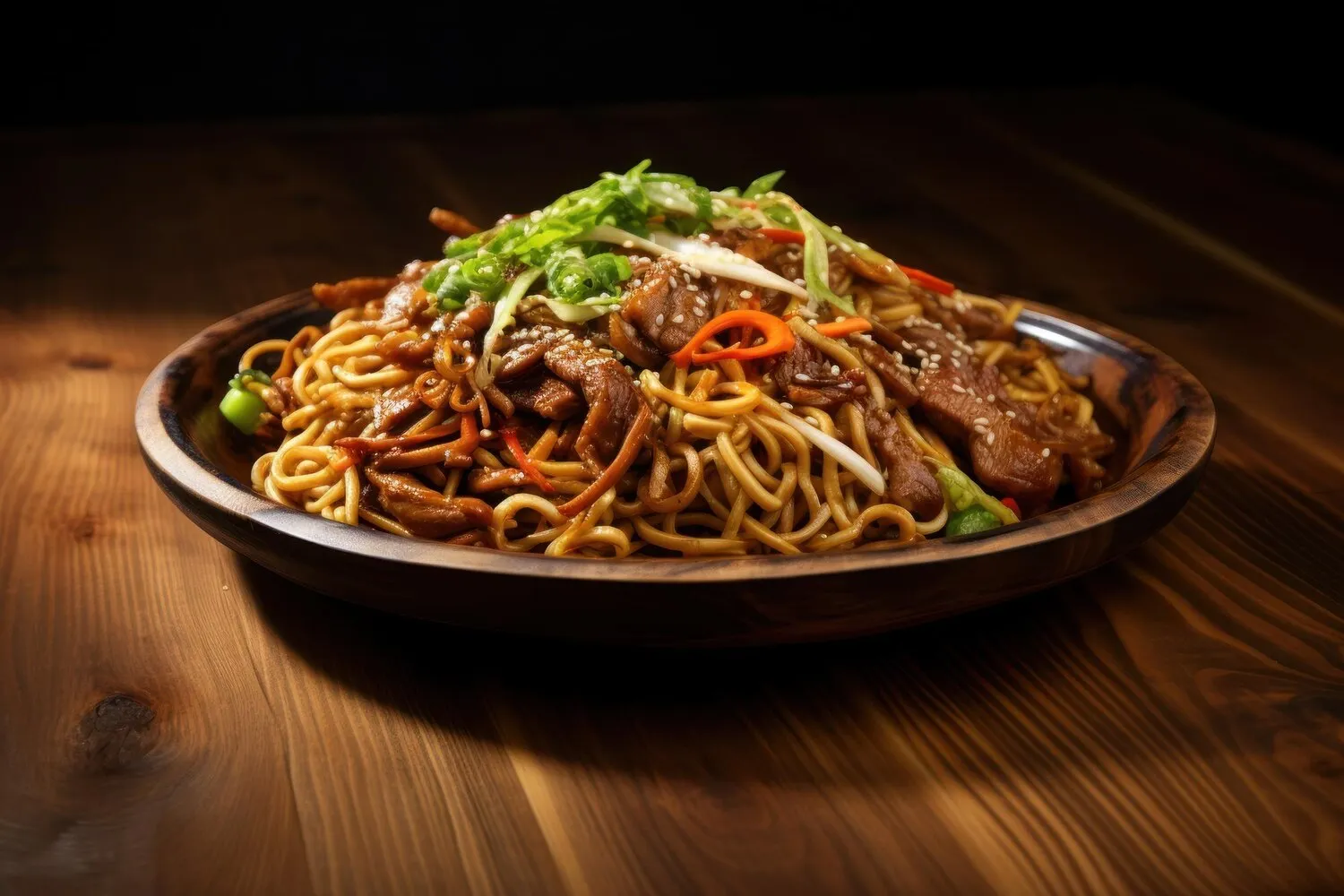
Singapore Noodles
Stir-fried rice noodles with shrimp, pork, vegetables, and curry powder.
Nutrition Facts
* The % Daily Value (DV) tells you how much a nutrient in a serving of food contributes to a daily diet. 2,000 calories a day is used for general nutrition advice.
Despite its name, Singapore Noodles is not a traditional dish in Singapore. Its origins are unclear, but it is widely believed to have been created in Hong Kong or possibly in Chinese takeaways catering to Western palates. The dish reflects a blend of Cantonese stir-fry techniques with South Asian flavors introduced through the use of curry powder.
Singapore Noodles represents a fusion dish, adapting Asian cooking techniques to meet the tastes of a broader audience. It has become a staple in Chinese takeaway restaurants around the world, showcasing how culinary traditions can evolve and blend across cultures.
Takeaway Staple
Singapore Noodles are commonly found on the menus of Chinese takeaway restaurants in North America, Europe, and Australia.
Fusion Cuisine
The dish is a testament to the adaptability of Chinese cuisine and its ability to incorporate flavors from other regions.
Singapore Noodles offer a delightful balance of savory, slightly sweet, and mildly spicy flavors. The curry powder is the star, lending its aromatic warmth to the dish.
The primary flavor profile is built upon the curry powder, which typically contains a blend of turmeric, coriander, cumin, chili powder, and other spices. Soy sauce adds a savory depth, while the shrimp and pork contribute umami richness. Vegetables like bell peppers, onions, and scallions provide freshness and sweetness. Some recipes incorporate a touch of sweetness, often from sugar or hoisin sauce.
Noodle Preparation
Soak the rice noodles in warm water until pliable but not fully cooked. Overcooked noodles will become mushy during the stir-fry process.
Curry Powder Distribution
Evenly distribute the curry powder to ensure a uniform flavor throughout the dish. Consider mixing the curry powder with a small amount of oil or soy sauce before adding it to the noodles.
Wok Hei
If possible, use a wok for stir-frying. The wok's shape and high heat capabilities allow for quick and even cooking, resulting in a characteristic smoky flavor.
Don't Overcrowd
Stir-fry ingredients in batches to prevent overcrowding the wok. Overcrowding lowers the temperature and steams the ingredients instead of stir-frying them.
Explore additional Asian dishes and restaurants
Explore AsianDiscover top dining spots and culinary experiences in Dublin.
Explore DublinLearn more about the food culture, restaurant scene, and culinary heritage of United States.
Explore United States